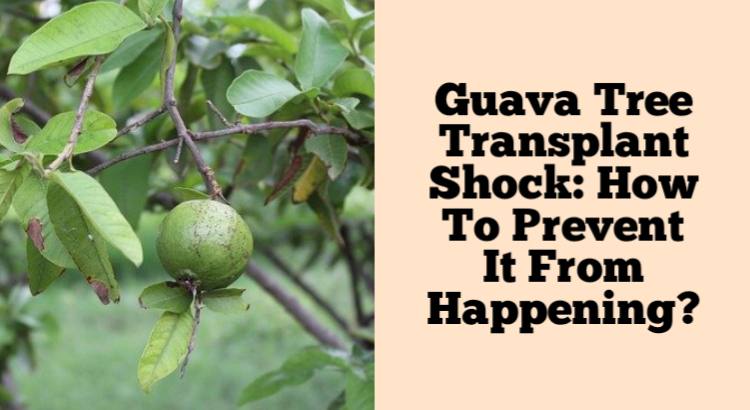Growing guava trees are enjoyable because it can give you delicious fruits. But there are times that its challenging to grow guava trees because of transplant shock. Transplant shock happens when you move the tree to a new place. What are the ways to prevent this from happening?
Symptoms of shock in guava trees.
If your guava tree is showing any of these symptoms, it’s probably suffering from transplant shock. This can occur when a plant has been moved to a different location or container. It may also happen when plants are moved from one area of your home to another.
Symptoms of transplant shock include:
- Wilt and drooping leaves
- Browning or yellowing leaves
- Inhibited growth, if you can see that the plant hasn’t grown at all since being repotted, then it is likely that stress has caused this response in your guava tree
How to encourage recovery from transplant shock in guava trees.
- Water the tree well.
- Keep the soil moist until the tree begins to recover.
- Do not fertilize for a month after transplanting, or at least six weeks if you’re using slow-release fertilizer.
- Apply a 2-inch layer of mulch around the base of your new guava tree to help retain moisture and keep weeds down as it recovers from transplant shock.
- Prune branches that are damaged or diseased before they begin to rot so they don’t spread disease to other healthier parts of your guava plant’s canopy.
Preventing transplant shock in guava trees.
Guava trees are sensitive to transplant, so it’s important to be careful when moving them from one location to another. To minimize the shock and stress that your guava tree will experience during transplant, follow these steps:
- Transplant guava trees in the springtime.
- Water well before and after transplanting your guava tree. The soil should be wet but not soggy; if possible, use a hose with little pressure so you don’t damage any roots by making them too dry or too wet while they adjust to their new environment.
- If possible, plant your guava tree in a new location that is similar to its original setting (such as surrounding plants). This will give it time for its roots to adjust gradually before planting begins so that less shock is experienced overall.
Guava trees can experience transplant shock, but if you know what to look for and what to do, you can help your tree recover.
Guava trees are best transplanted when they are small. The ideal size for transplanting is about 1 foot tall, with a trunk less than 3 inches across, and no more than one season of growth from being fully matured.
This is because guava trees have a shallow root system and need to establish new roots in their new environment before they can adapt to the change.
Before you start digging up your tree and moving it into its new pot (or anywhere else), make sure that wherever you’re taking it has plenty of sun exposure.
Guava trees need six hours of sunlight each day at least 60 cm away from any window pane or glass door where direct light cannot reach them directly.
If this isn’t possible then another option would be placing some type of reflective material nearby hung around each branch so that light reflects off onto all sides instead–just make sure not too many leaves get burned though.
Can guava trees be transplanted?
Guava trees are tropical plants, which means they can’t survive a cold winter. If you live in a temperate climate, your guava tree will need to be brought indoors for the winter months and kept in a warm place with indirect sunlight.
You may even want to consider growing it as a houseplant if you don’t have enough space outside for the tree to grow. Guava trees aren’t just decorative—they also produce sweet fruits that are great for making jams or desserts.
How to transplant a guava tree?
Guava trees are easy to transplant, but you should follow the correct procedures for transplanting guava trees.
When you are moving a tree from one location to another you need to do it at the right time of year.
You can plant guavas in the fall or spring and also in late summer if you live in an area that does not get freezing temperatures during those seasons.
Guava trees do best when they are transplanted from early spring through late summer because their roots are still actively growing at this time of year and will be able to take hold quickly when placed into new soil conditions.
If your tree is being moved before April or after August, then it will likely suffer damage due to cold weather or lack of water respectively
Conclusion
When a guava tree is transplanted the right way it will not suffer transplant shock. Take care the guava tree well in order for it to thrive and grow better. Water the tree right after transplanting.

